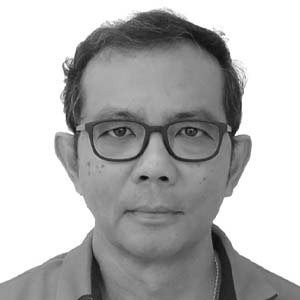
How much retirement income would you need?
It’s a good question and one that’s probably on the minds of people nearing the end of their working life.
At the Institute for Financial Literacy (IFL) where I teach as an Associate Trainer, one of the videos we show at the start of our classes on retirement planning features interviews with Singaporeans from all walks of life on how much they think they will need when retired.
Perhaps not surprisingly, the answers range widely; from as low as $2,000 to as high as $10,000 per month! One person (in her 20s, I might add) who responded with S$10,000 said, “after all, retirement is a 30-year holiday, every day is like Saturday or Sunday”!
I’m pretty sure that for most people, $10,000 may be more than enough but for others, it might not. After all, it depends on the lifestyle you expect to lead after you cease to have a regular income.
Advertisement
How then should one approach the question of estimating retirement income needs?
The first and most important step is to figure out how much you think you will need per month in retirement.
There are two possible approaches — simply use 75% of your current income or go through your present monthly expenses and identify which ones will increase, decrease or remain the same after you retire, then add up the total.
For the sake of illustration, let’s look at a 50-year-old male named John who wishes to retire at age 65 and currently earns a monthly salary of $6,000, which, with the 13-month annual wage supplement (and excluding bonuses) works out to just under $80,000 per year.
Let’s assume that John carefully tabulates his monthly expenses and makes the necessary adjustments for those expenses which he thinks will remain the same, rise or fall after retirement, and the figure he gets in today’s dollars is $2,500.
(Note that the following calculations are for one person. A couple should multiply the figures by two.)
Assuming an average annual inflation rate of 3%, the S$2,500 he needs today is equal to about S$4,000 in future dollars, when he wishes to retire in 15 years.
1. Use CPF LIFE as the basic foundation
At IFL, participants are taught to always use CPF LIFE as the basic building block for retirement needs. How this annuity scheme works has been explained in great detail in a previous article, so what will be covered here are the basics.
If you turn 55 this year and can set aside the Full Retirement Sum (FRS) of S$205,800 in your Retirement Account, then by age 65 this figure would have grown with a minimum 4% annual compound interest to about S$308,900 and you will be entitled to a monthly payout of around S$1,600 for the rest of your life.
The bulk of the S$205,800 will come from the Special Account (SA) and if there is insufficient balance in the SA, then the remainder will be taken from the Ordinary Account (OA).
Everyone who is below the age of 55 is allowed to top-up his or her SA to the FRS in the current year. So even though John is only 50 now, he is entitled to raise his SA balance to S$205,800 in 2024.
(Actually, when John reaches 55, he will have to set aside the FRS prevailing in 2029, which will be more than S$205,800. However, since that sum is not known today, we will use the current FRS for our illustration).
If John has sufficient cash or funds in his OA to transfer into his SA to make up the S$205,800 today, then well and good. However, if he doesn’t, then he should try to aim for that figure in his SA by age 55.
A 50-year old can reasonably be expected to have at least S$100,000 in his SA if he or she has worked for about 30 years.
Since he earns S$6,000 per month and given that at age 50, 11.5% of a person’s salary goes into their SA, then this account can be expected to grow by about $690 per month.
By using a financial calculator and using S$100,000 as the starting amount, you can easily work out that all John needs to do is top up his SA, which earns 4% per year, with an additional S$610 per month in order to reach S$205,800 at age 55.
As noted earlier, this will provide him with S$1,600 per month for the rest of his life from age 65. However, there is still a shortfall to be filled – roughly (S$4,000-S$1,600) or S$2,400 per month in future dollars.
2. Invest to get the rest
- What’s your risk profile?
When it comes to investing, the individual’s risk profile is very relevant. It’s important to know that there are two components to a risk profile – tolerance and capacity.
Risk tolerance refers to a person’s emotional ability to bear risk. Some people can visit casinos very often or trade in hugely volatile cryptocurrencies every day, whilst others may not be able to sleep well even after buying a “safe” investment product.
You can take the CPF Risk Tolerance questionnaire available on its website to gauge your own risk tolerance.
Risk capacity on the other hand refers to the financial ability to take risk. A person may have a high risk tolerance but if he earns a low salary and has many financial commitments such as a mortgage and expenses for children, then his risk capacity will limit the risk he can take.
- Going the safe route
If you are a risk averse person with a low risk tolerance but have a moderate risk capacity, then perhaps the best route would probably be to invest in a safe product like an endowment insurance plan.
Insurance companies are currently allowed to project investment returns of 3-4.25% though of course, these are not guaranteed. However, a decent endowment plan can reasonably be expected to achieve an annual return of around 4% over the course of 15 years.
Since John needs to fill a gap of S$2,400 per month in future dollars, wishes to retire at 65 and thinks he will live until 85, then in total he will require a lump sum of around S$576,000 (S$2,400 x 12months x 20 years) in 15 years’ time.
Using a compound interest calculator and assuming zero initial investment, John will need to invest about S$2,300 monthly in an endowment product that can earn an annual return of 4% per year in order to achieve a cash value of just under S$576,000 when he turns 65.
- Going the riskier route
If S$2,300 seems like a large chunk of John’s take-home pay of S$4800 (it’s actually 48%) then logically, if he can only afford to set aside a smaller sum he will have to invest in a higher-yielding product which means taking on more risk.
In order to accumulate the required sum of S$576,000 and investing say, only $1,500 per month, he will have to find a product that can yield at least 9% per annum over 15 years.
This is not wholly unrealistic, but it involves taking on risk. In this regard he has a wide range of investments to choose from — high-yield bond funds, unit trusts, stocks, investment-linked insurance policies (ILPs) and exchange-traded funds.
Here is where John’s risk profile comes into play. All investment products come with varying degrees of risk, will require the investor to know what they are doing and therefore require regular monitoring.
For example, not many people might know that when buying an ILP you are actually investing in a unit trust and that the responsibility for choosing the unit trust is the policyholder’s and not the insurance company.
Furthermore, if the fund chosen doesn’t perform, it is up to the policyholder to switch to something else.
In other words, earning a higher return will require more active input from John – if he is prepared to put in the effort.
Some final notes on planning your retirement income
The approach outlined above is aimed at providing a simple framework for working towards a desired amount in retirement.
Although it takes into account inflation from the time John started planning at age 50 until he retires at 65, it does not factor in inflation from age 65 to 85 and this should also be considered.
Note also that John can tap into government schemes like the Silver Housing Bonus and Lease Buyback to supplement his income if
necessary.
Note also we have assumed John’s salary remains fixed from age 50 onwards, though this can be expected to increase. Also, he should have paid off his housing loan by age 55, thus releasing more resources.






